The Hawaiian Green Sea Turtle "Honu"
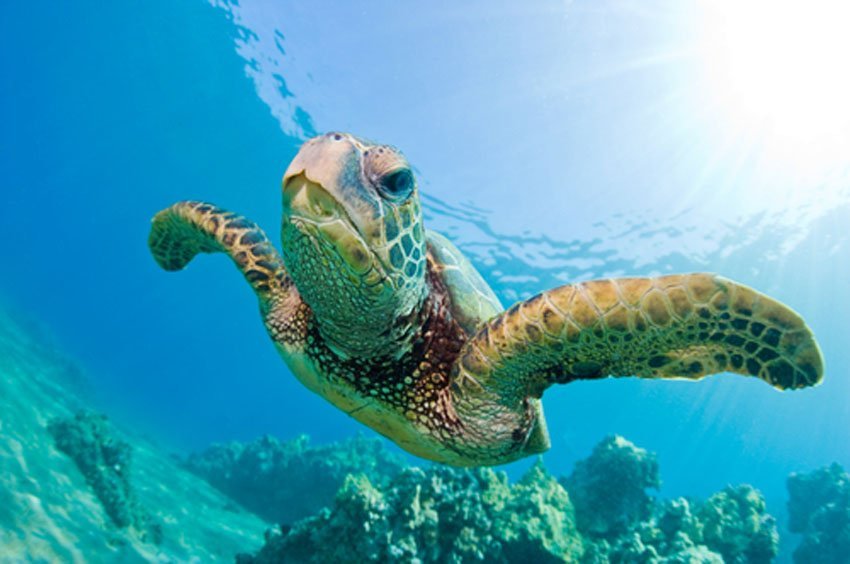
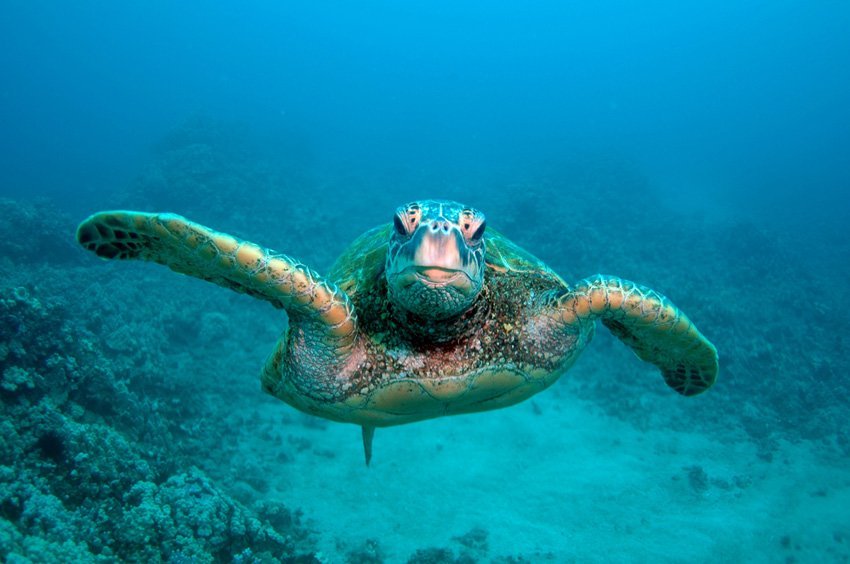
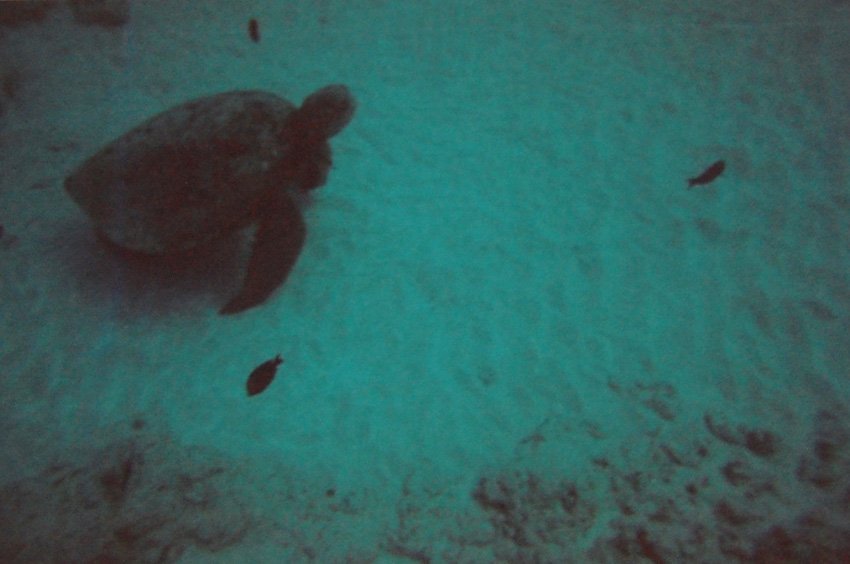
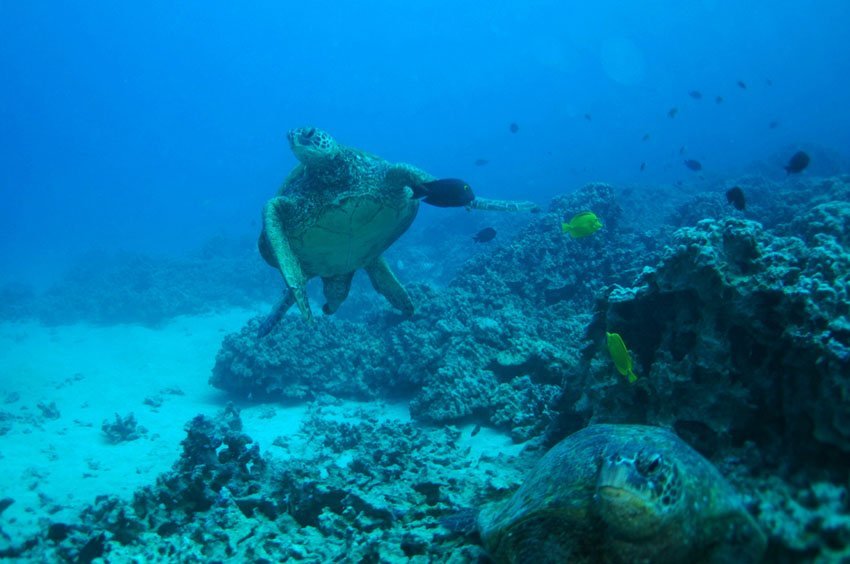
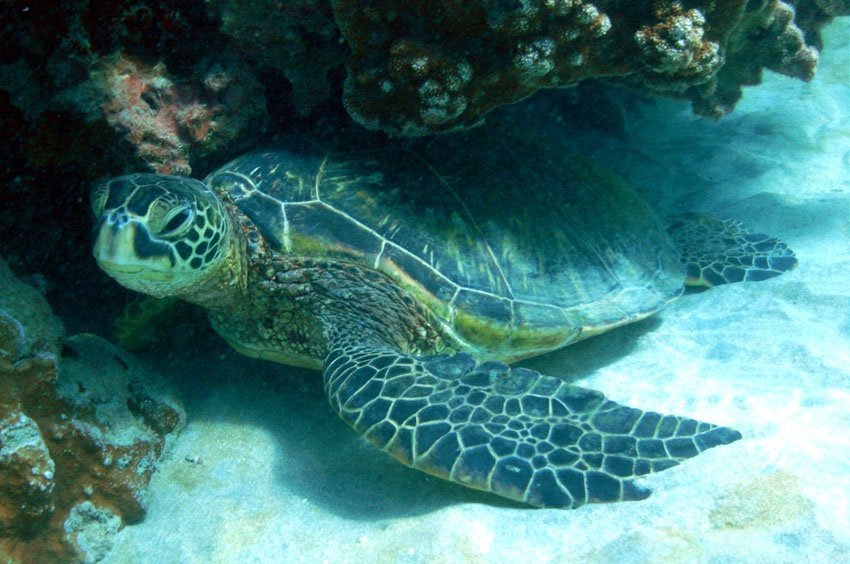
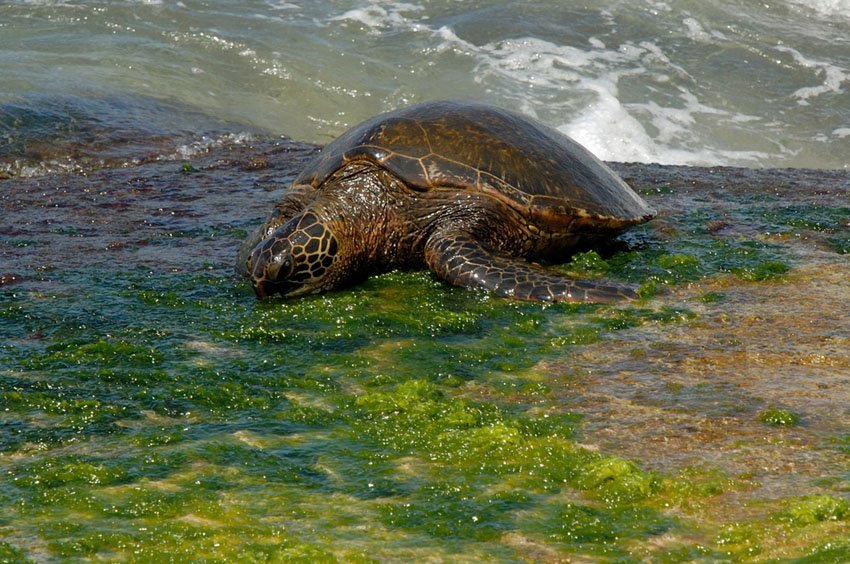
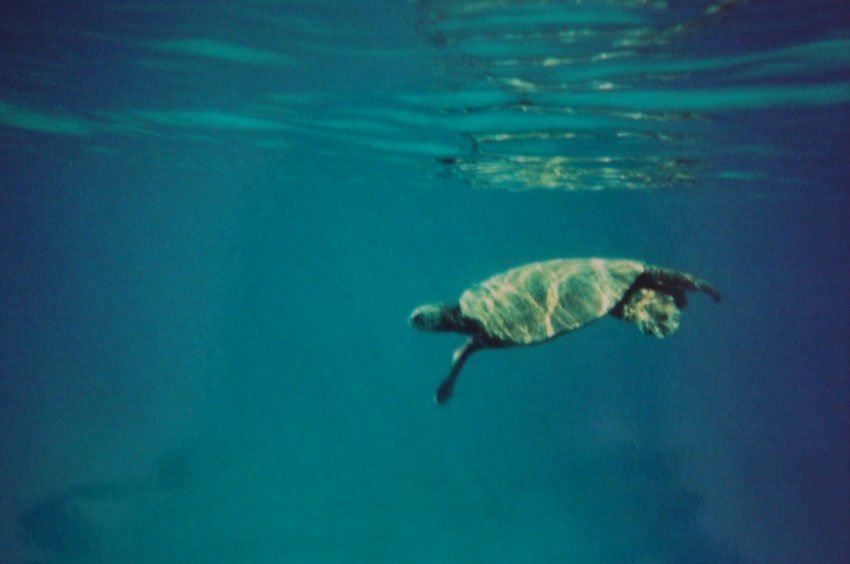
There are seven species of sea turtles in the world, four of which can be found in the Hawaiian Islands - the green sea turtle, the hawksbill, the leatherback and the olive ridley. The green sea turtle is the most common species of sea turtle in Hawaii and one of the few to have seen numbers rise in recent decades due to conservation efforts.
The green sea turtle (Chelonia mydas) is among the largest marine turtles. The species is named after the color of its fat, which is thought to be tinted by its diet. Green sea turtles have been swimming the oceans for over 200 million years and are one of the few species on Earth to have lived trough the evolution and extinction of the dinosaurs and ice ages, roaming the seas before the Hawaiian Islands even existed.
Hawaiian legend is peppered with stories of this magnificent creature, including the green sea turtle 'Kauila,' who could change herself into a girl to watch over the children playing at Punalu'u Beach on the Big Island. Some sources even claim that people from the Marquesas, the first humans to travel to the Hawaiian Islands, were guided by sea turtles. In ancient native drawings, the green sea turtle is represented by the petroglyphic 'honu.'
In tribal times, chiefs were given the honor of feasting on the flesh of the sea turtle, and in the years of monarchy, the royal family was served this delicacy. Nowadays, despite protection from environmental agencies, millions of these ancient reptiles end up in soup pots worldwide.
Living to an average of about one hundred years, with a heart-shaped grey-brown shell up to 3 feet (90 cm) long, green sea turtles weigh as much as 200-400 pounds (91-181 kg) and are found in tropical and subtropical waters around the world. Adult green sea turtles are the only herbivorous sea turtles. When young, they are carnivorous, eating sponges, snails and crabs, but as adults they eat seaweeds, algae and seagrass. The head - which, unlike many other species of turtle, green sea turtles are unable to retract into their shell - is much smaller than other varieties, making their dark eyes appear even larger.
Male green sea turtles are born on land, but spend virtually their entire lives at sea. Hawaiian beach sightings therefore are mainly females and juveniles. History plays a huge part in the reproduction cycle - green sea turtles migrate hundreds of miles to breeding grounds to mate, and female green sea turtles then travel to the same beaches to nest as their predecessors. For most Hawaiian turtles, this journey involves a migration to the quieter shores of the uninhabited Northwestern Hawaiian Islands, which lie northwest of the main, inhabited islands of Hawaii.
The unique nesting ritual of the green sea turtle has changed very little over millions of years. When the female is ready to hatch, she waits bobbing the surf until the calm and coolness of evening. At the right moment she hauls out onto the exposed beach and digs a two-foot (60 cm) deep hole with her flippers. She then crouches over it and lays her leathery eggs. During a single season the female green sea turtle might fill three or four nests with up to 100 eggs in each. After filling the nest with sand, she darts back to the water, her mission complete for two to three years, when she mates again.
However, some of those eggs will not hatch and not all of the two-inch (5 cm), one-ounce (28 gram) hatchlings will be able to run through the surf into the freedom of the ocean. Rats, mongooses, fungi, crabs, dogs and humans pose a danger for the precious eggs. The few babies that survive have to dig themselves out of the sand and run for life.
Turtles are quite clumsy when moving on land, but in the water, they can swim at speeds up to 35 mph (56 km/h). Adult turtles need to come to the surface of the water to breathe about once every two hours when at rest.
In the 20th century the green sea turtle population declined so much that in 1978, it was placed on the Endangered Species List. In the last few decades, thanks to conservation efforts, the green sea turtle population has increased. Studies estimate that Hawaii now has as many as 35,000 mature green sea turtles and perhaps 250,000 juveniles age 6 or under according to George Balazs, a Hawaii marine scientist (Synopsis of Biological Data on the Green Turtle in the Hawaiian Islands, NOAA-TM-NMFS-SWFC-7, 1980).
Today, Hawaiian green sea turtles (as well as other turtle species in Hawaii) enjoy full protection under the federal Endangered Species Act and under Hawaii state law. It is prohibited to hunt, handle, injure or harass green sea turtles or holding them in captivity without a special permit for research or educational purposes. Furthermore, swimmers should keep in mind that touching, riding or chasing a sea turtle is illegal. Fines can be as high as $100,000 and include some time in prison.


























